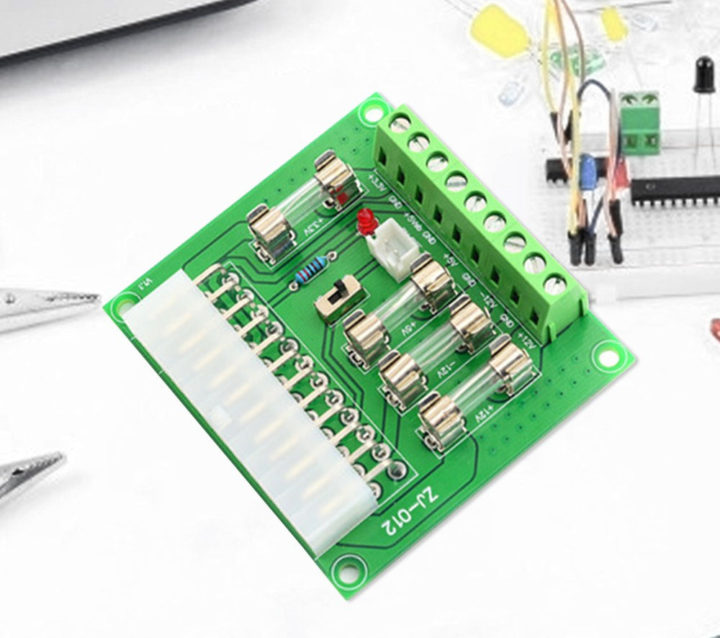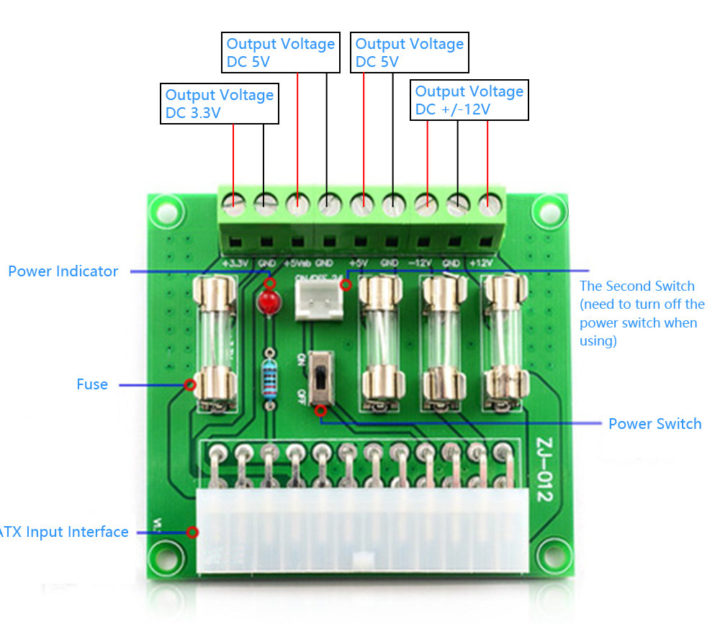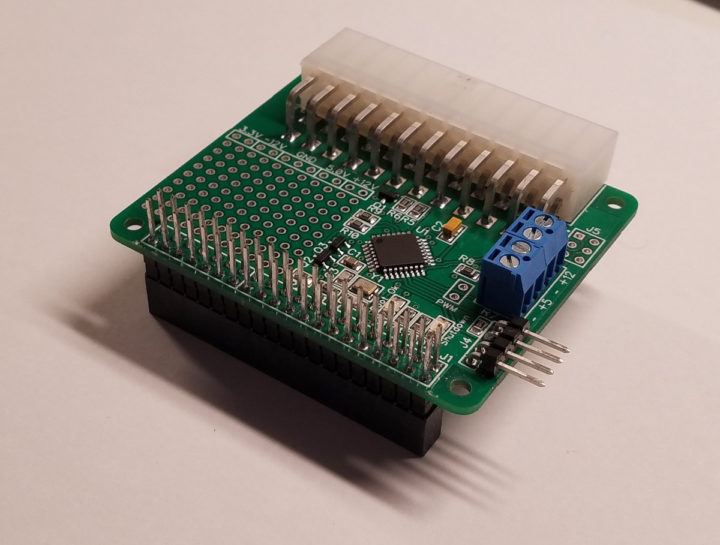Many people have ATX power supplies from older desktop PCs that they may want to reuse with Arduino boards, Raspberry Pi, or other single board computers.
It’s indeed possible to do so by trimming some cables and making a circuit to protect the board from over-voltage or over-current. But ZJ-012 adapter board offers a simpler solution with a 24-pin header for the ATX power supply, terminal blocks for connection to the target board, some fuses for protection, and a header to connect an on/off button.

- Power Input – 20-pin or 24-pin computer ATX power supply
- Power output – 9-pin terminal block with +3.3V, +5V, -12V, +12V, +5V, GND with fuses for each power outputs
- On/Off control – Toggle switch or header for external button/switch (shorted for power on)
- Misc – Power indicator (red LED)
- Dimensions – 70 x 63 x 20 mm
- Temperature Range –25°C to 85°C
- Humidity – 5%~95%RH

It’s also inexpensive, as I first found it on ICStation for about $5, but it can also be purchased on sites like Banggood or Aliexpress with the latter offering better deals for this particular board, as low as $2 plus shipping, which amounts to roughly $4-5 in total.
While looking at the subject I also noticed “Pod Bay 3″‘s mini ATX PSU II Raspberry Pi HAT designed to connect a desktop ATX power supply directly to the board. So that’s an option for a more integrated solution, but the price is quite higher starting at $26.45 on Tindie for a DIY kit.

Alternatively, if you’d prefer having the power supply to be housed in a case, it’s always possible to convert an ATX power supply into a bench power supply with some 3D printed parts.

Jean-Luc started CNX Software in 2010 as a part-time endeavor, before quitting his job as a software engineering manager, and starting to write daily news, and reviews full time later in 2011.
Support CNX Software! Donate via cryptocurrencies, become a Patron on Patreon, or purchase goods on Amazon or Aliexpress




